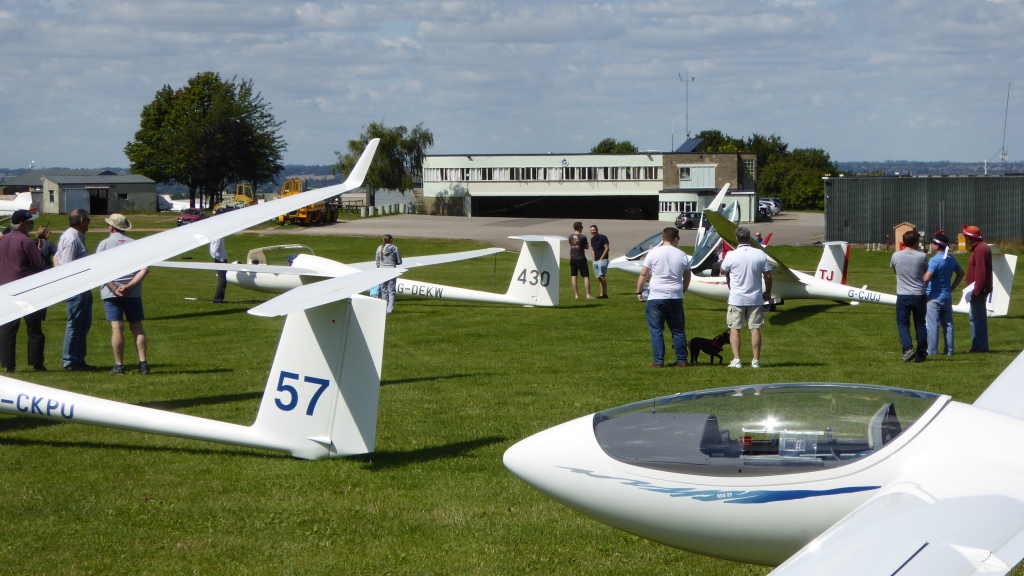Managing Flying Risk – Preparing for Flight
Preparing for flight is a crucially important process involving both the pilot and the glider (or other aircraft).
Responsibility
It is the responsibility of the pilot in command to ensure before flight that the aircraft is airworthy and prepared for flight (reference Sailplane Air Operations rules).
The pilot
Time. Always give yourself time to prepare yourself and your glider.
Fit to fly? Confirm you are fit to fly using the ‘I’m Safe’ mnemonic. There’s more detail here. If in doubt, stay on the ground.
Current? Is your total experience and recent experience enough for the type of flying you are about to embark on? It’s worth have a look at the currency barometer here.
Legal? Consider licensing recency (where applicable) and validity of medical declaration or certificate as required.
Aware? Weather, airspace, NOTAMs, site operations, field condition, etc.
The glider
Familiar with the glider? Even the same types have differences with rigging details, equipment and canopy jettison. The pilot in command must ensure that the operating limitations of an aircraft, as specified in the Aircraft Flight Manual, will not be exceeded at any time during the flight.
Legal? ARC, annual inspection and insurance must be valid.
Familiar with the safety equipment? Parachute, FLARM, other.
Weight and balance? Aircraft loading limitations inc with water ballast are detailed in the Aircraft Flight Manual and weighing schedule supported by a cockpit placard. Fixed cockpit ballast weights can be used as required. When an additional margin of safety is required, eg during type conversion and for inexperienced pilots, an effective cockpit load (say 10-15 kgs) in excess of the placard minimum should be established.
Rigged correctly? The Aircraft Flight Manual details how to rig a glider. There is additional safe rigging information here.
Daily inspection including positive control check complete and documented? Aircraft continuing airworthiness and air operations rules identify that the pilot in command is responsible for the pre-flight inspection, and that this inspection must be carried out by the pilot or another qualified person.
The requirement to pre-flight inspect aircraft (ie gliders and powered aeroplanes) at BGA clubs is normally achieved by carrying out a Daily Inspection (DI). A DI is a safety critical task. Approval to carry out a daily inspection is normally provided following an assessment by a club instructor. The club, as the operator, is responsible for qualifying and authorising its members to carry out DIs of its club aircraft. The member pilot’s age, experience and training to carry out DIs should be taken into consideration. The DI includes a check of all the daily inspection points described in the aircraft flight manual and a positive control check. Documenting and signing for the DI helps to avoid incorrect assumptions about completing the task.
Pre-flight walk around completed? An important last chance external check. Some clubs use an ABCD checklist.
Pre-takeoff checks
Pre-takeoff cockpit checks should be carried out carefully using an established checklist. Distraction is a common cause of error. Rushing due to time pressure is also a common cause of error. Both of those causal factors can be addressed to reduce the risk. If the pre-takeoff checks are interrupted for any reason, the checks should be restarted and completed with care.
The BGA sailplane recommended pre-takeoff checklist is:
C CONTROLS working fully and freely and in the correct sense
B BALLAST securely fastened; correct cockpit load
S STRAPS for all occupants correctly locked and tight
I INSTRUMENTS appear serviceable and set as required
F FLAPS check operation and set for take-off
T TRIM check operation and set for take-off
B BRAKES check operation, closed and locked
E EVENTUALITIES consider launch failure and other options
C CANOPY closed, locked and doesn’t open with applied pressure
